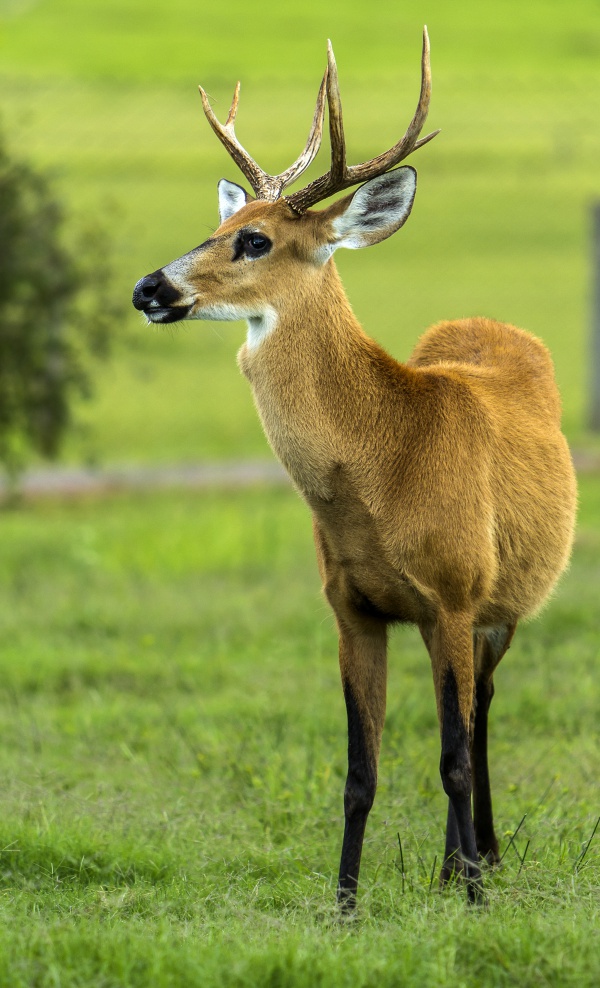Facts About Marsh (Swamp) Deer
The marsh deer, often referred to as the swamp deer, is the largest deer species in South America. These majestic animals can grow up to 2 meters in length and stand about 1.2 meters tall at the shoulder. They are found in countries such as Argentina, Bolivia, Peru, Brazil, Uruguay, and Paraguay. Historically, their range spanned much of the tropical and subtropical regions of South America, but today they are primarily confined to isolated populations in marshes and lagoon areas within river basins. The International Union for Conservation of Nature (IUCN) classifies them as vulnerable, and they are also protected under CITES Appendix I.
Distinguished by their large ears edged with white hairs and red-gold to tawny brown fur, marsh deer are quite recognizable. Male marsh deer are notable for their forked antlers, which enhance their distinctive appearance. Typically, these deer live solitarily or in small groups and must remain vigilant against predators such as jaguars and mountain lions. They thrive in marshy areas with shallow waters, which not only provide sustenance but also serve as swimming grounds. Their diet primarily consists of aquatic plants and varies with the seasons.
The breeding season for marsh deer usually coincides with the dry months, featuring a gestation period of approximately 271 days. The young are typically born between October and November. Conservation efforts for marsh deer focus on habitat preservation, anti-poaching measures, and managing disease transmission from cattle. Establishing national parks and other protected areas is vital to these strategies, aiming to ensure the preservation of both the marsh deer and their natural habitats.

 Paraguay
Paraguay